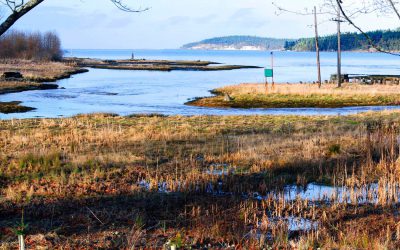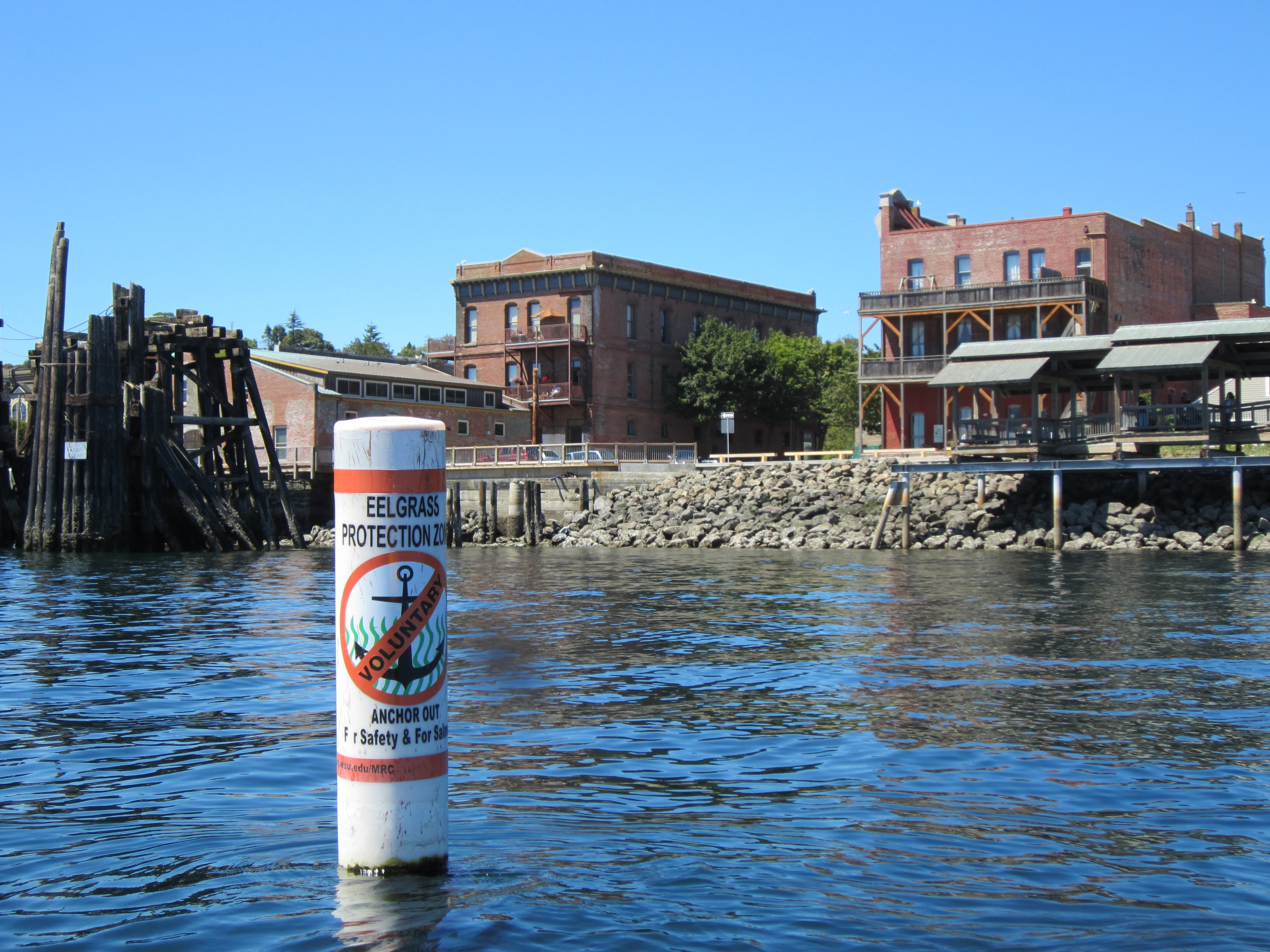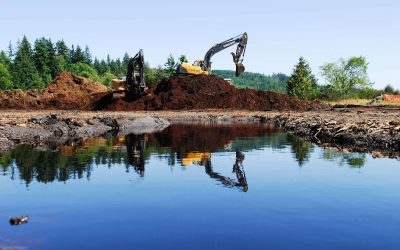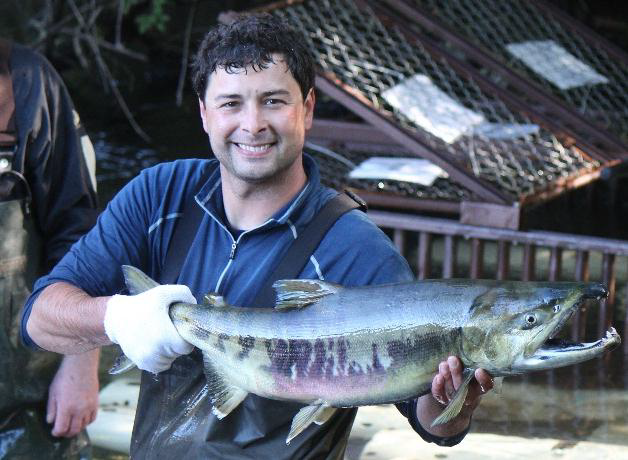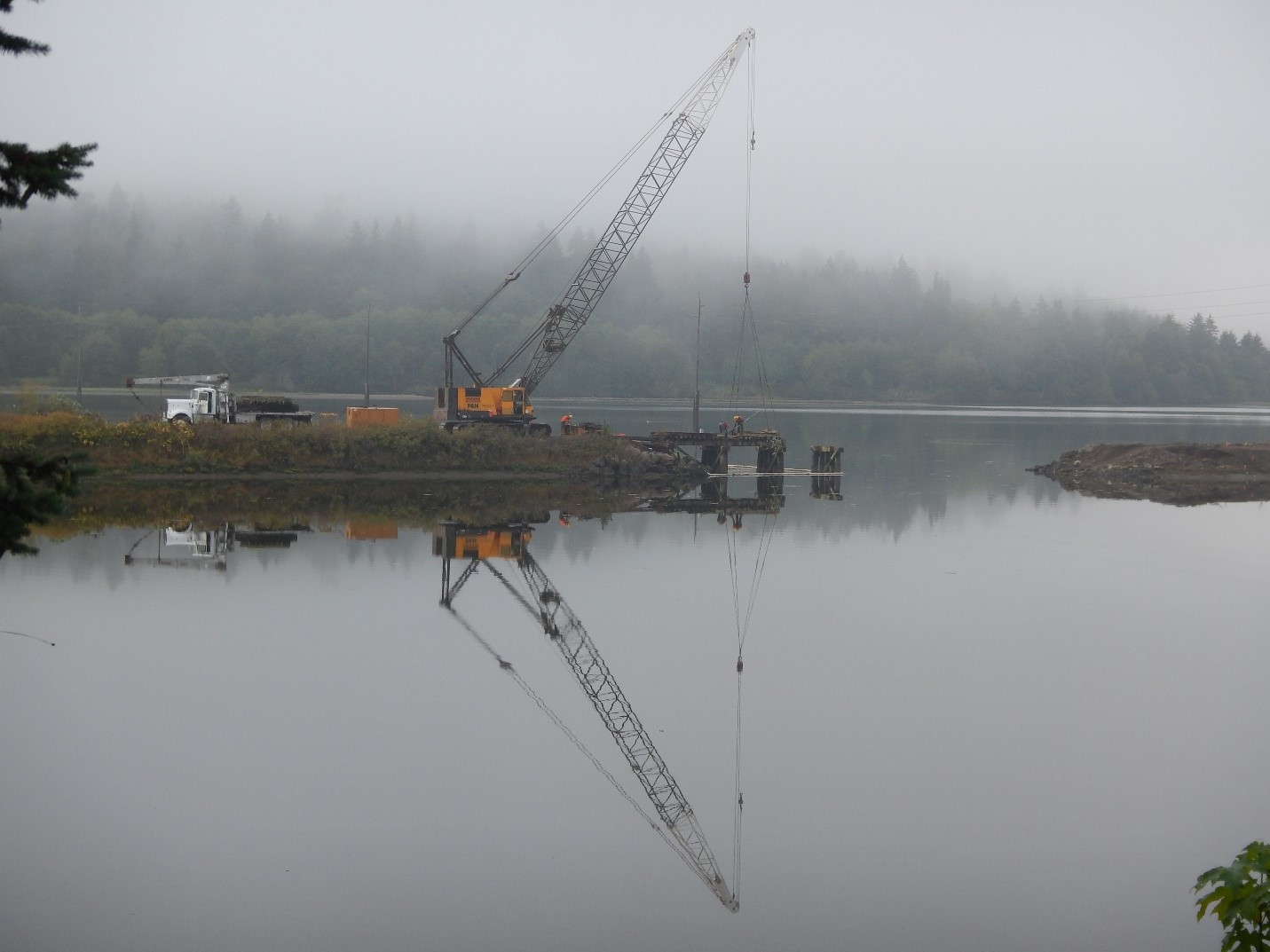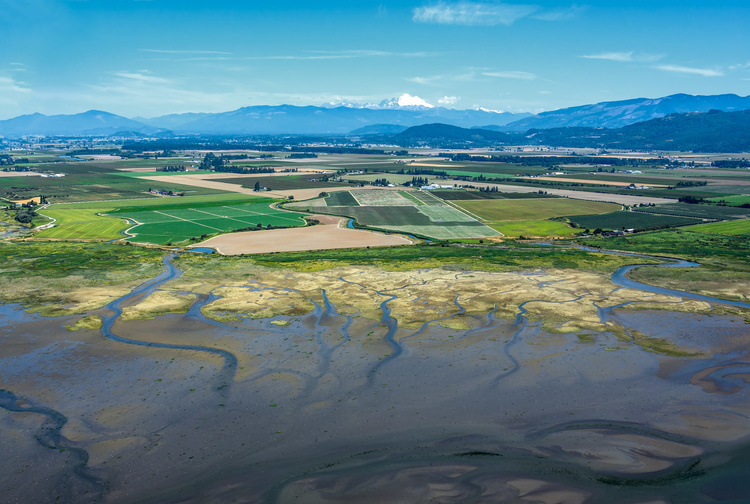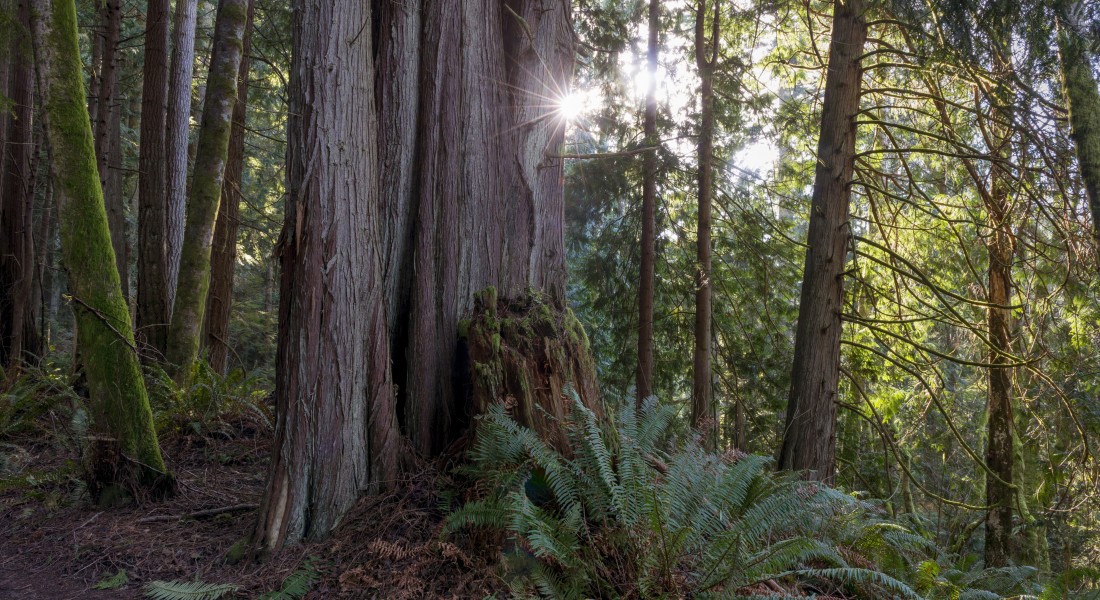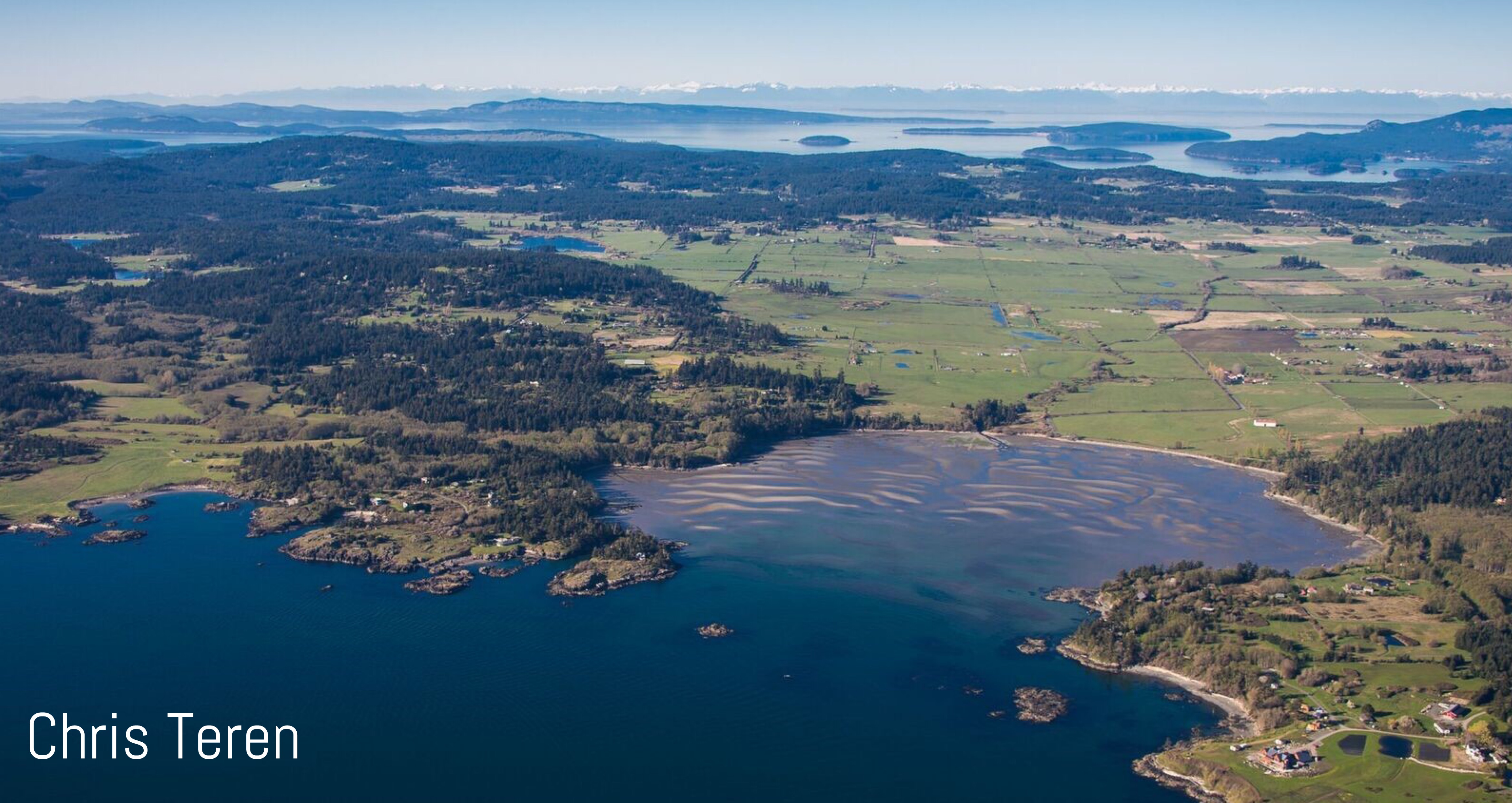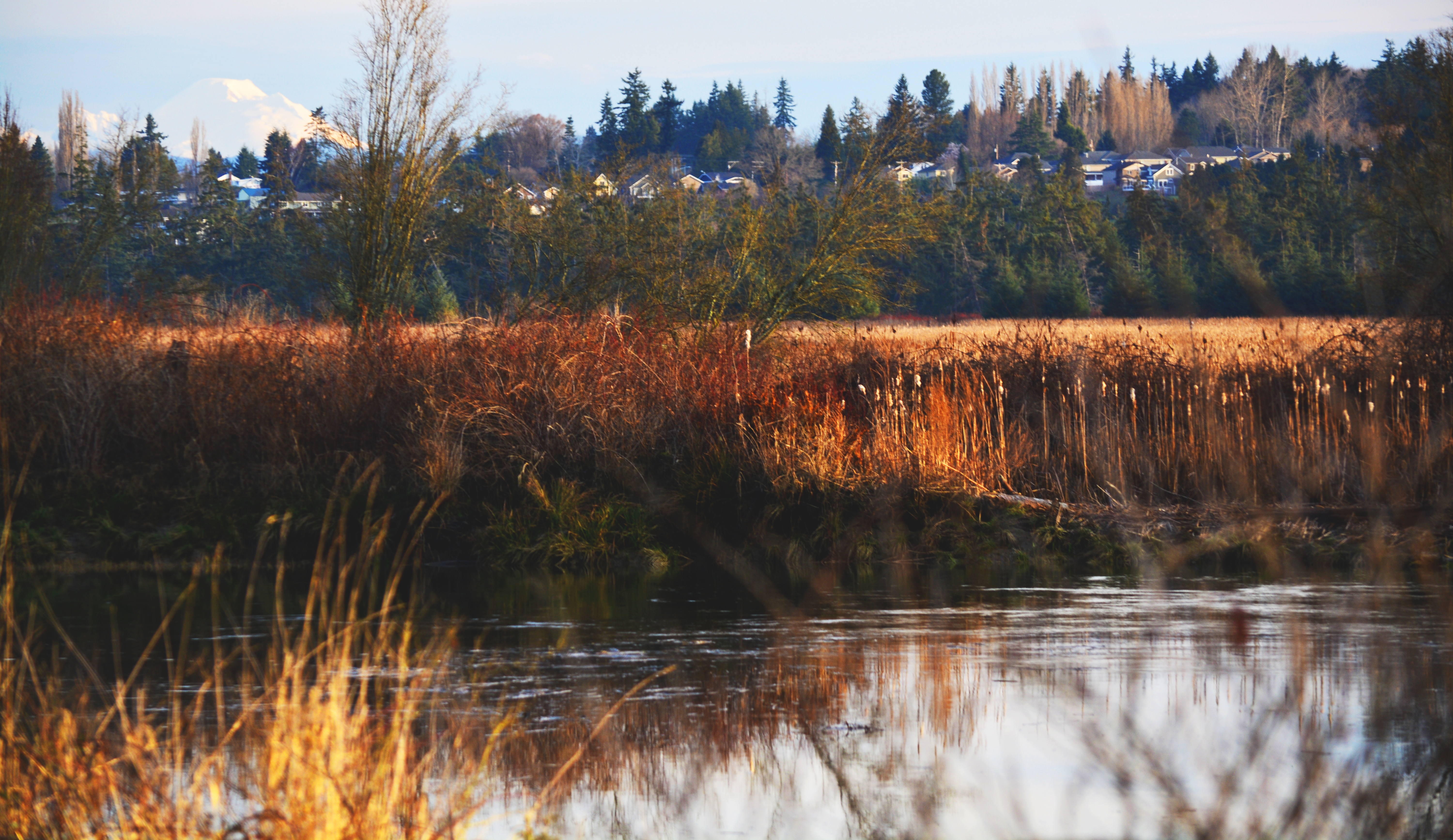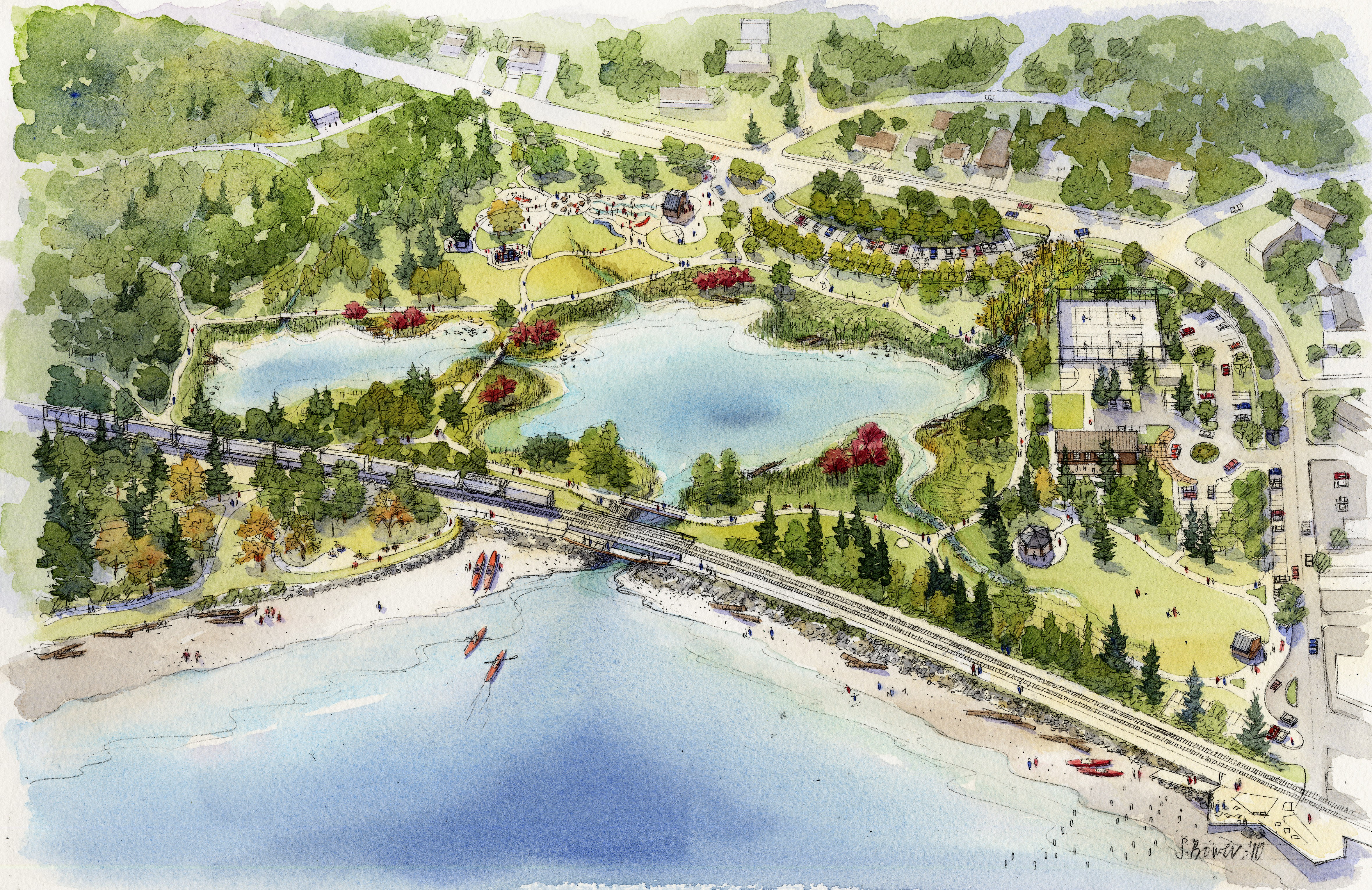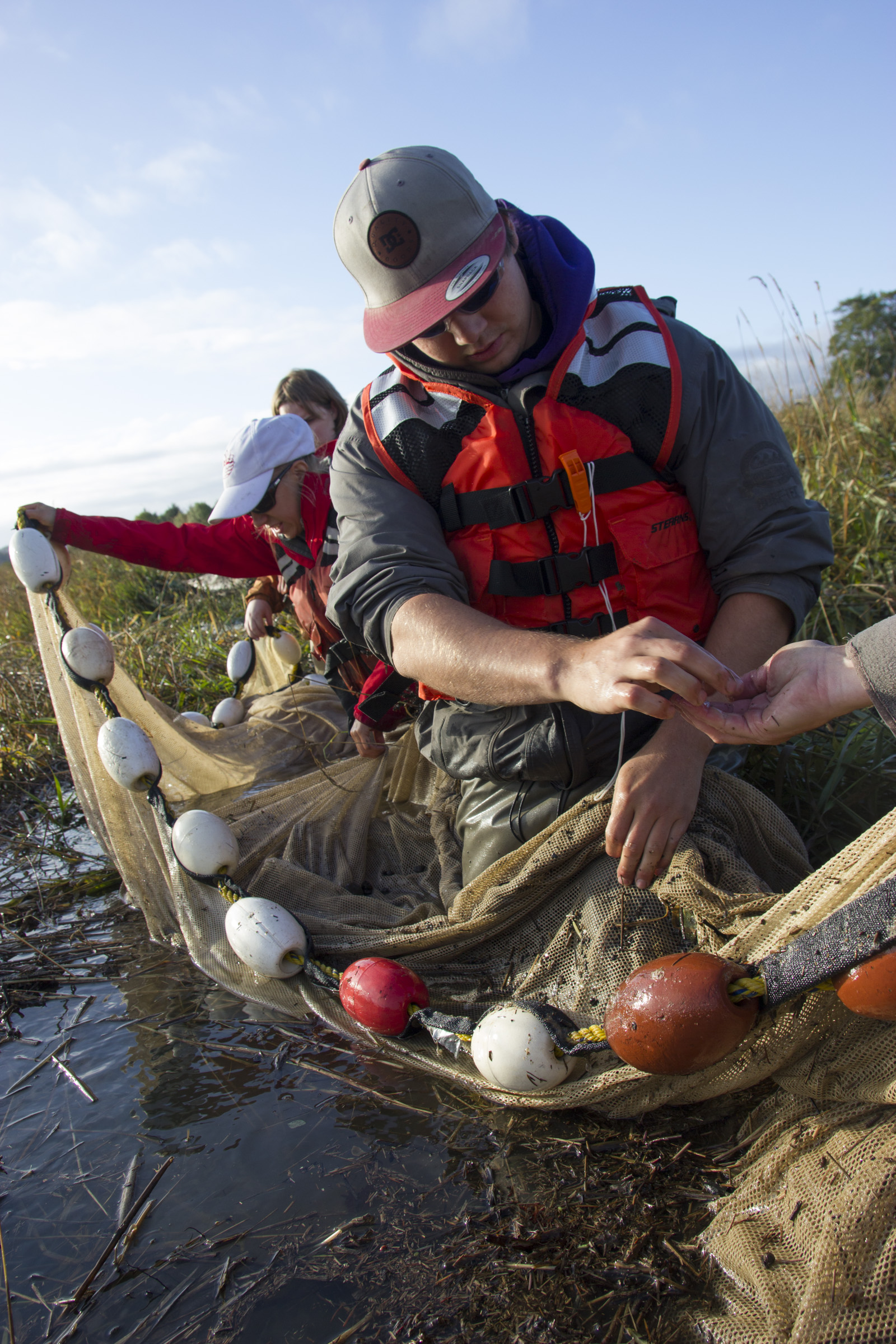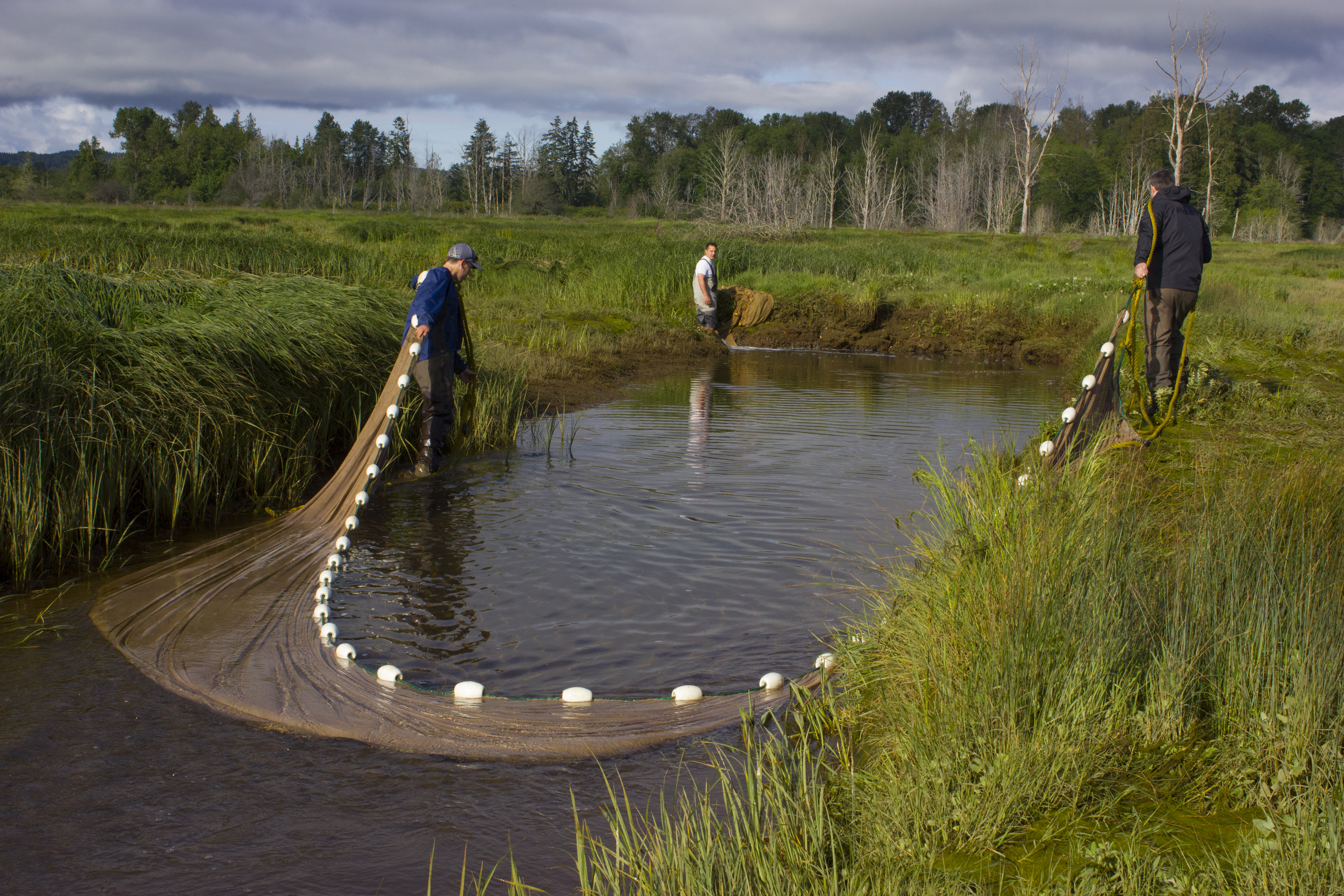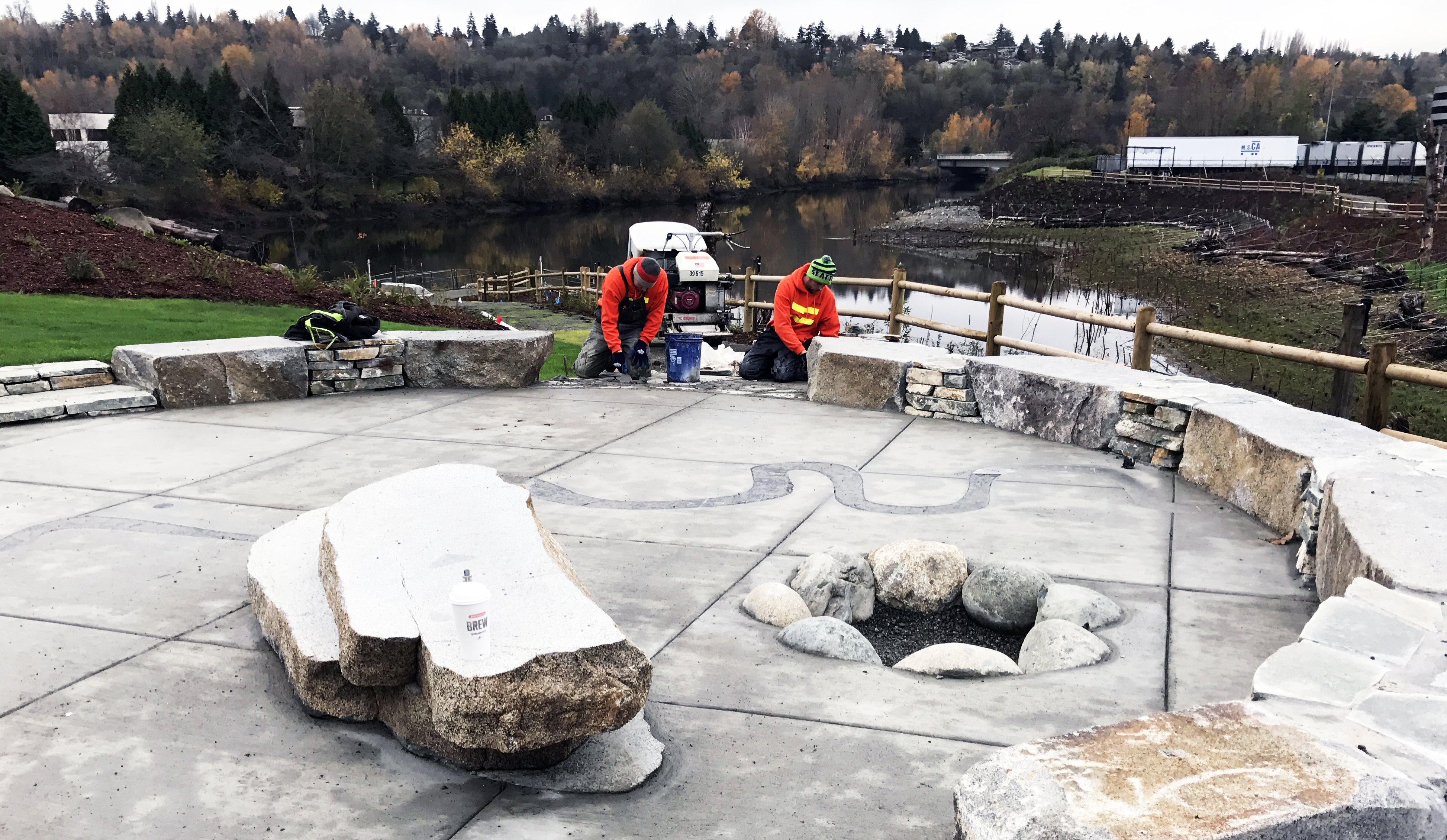Partners restore imperiled summer chum salmon and shellfish in Clallam County Jimmycomelately Creek and its estuary in Clallam County are now home to a robust population of ESA-listed summer chum salmon as well as a thriving commercial shellfish operation. This...
Estuaries link the ocean and rivers, provide nutrients to the environment, and constitute a vital part of the Puget Sound ecosystem. Estuarine restoration aims to open natural tidal flooding that increases nutrients and food supply, provides access to habitat, and revegetates areas with riparian and marine plants. After estuarine habitat is made accessible to tidal flow, young salmon, birds, crabs, and other wildlife use restored areas readily. Many estuarine projects support local economies and provide safety benefits to the community in addition to habitat improvements.
Salmon Creek Estuary Restoration
Restoring an old mill site to benefit salmon, shellfish, and people The Salmon Creek and Snow Creek estuaries are located within a half-mile from each other in Discovery Bay, forming a complex system of salt and freshwater interchange where young salmon get used to...
Union River Estuary Restoration
Restoring habitat and connecting people and salmon The Hood Canal Salmon Enhancement Group and the Washington Department of Fish and Wildlife collaborated to return ocean tides to restore salt marsh habitat in the lower Union River, which is part of the larger Lynch...
Maynard Nearshore Restoration
Removing defunct infrastructure to protect fish and shellfish The Maynard Nearshore Restoration Project is located at the head of Discovery Bay in Jefferson County. Salmon and Snow Creek enter the bay within a half-mile of one another forming an estuary that...
Fir Island Restoration
CONGRESSIONAL DISTRICT: 2 LEGISLATIVE DISTRICT: 10 WRIA: 3 CITY, COUNTY: Skagit, Skagit County Project Summary The Skagit River and its delta provide habitat to some of the largest runs of Chinook, pink, and chum salmon in the state. Tidal wetlands protect and feed...
Lyre Conservation Area
CONGRESSIONAL DISTRICT: 6 LEGISLATIVE DISTRICT: 24 WRIA: 18 CITY, COUNTY: Dungeness, Clallam County Project Summary The Western Strait of Juan de Fuca, a migratory corridor for Puget Sound salmon, is characterized by small pocket estuaries and high-energy beaches. The...
Puget Sound National Coastal Wetlands Conservation
In early 2017, the U.S. Fish and Wildlife Service awarded the Washington State Department of Ecology with $4.7 million in National Coastal Wetlands Conservation grants to fund six projects to restore and protect wetlands in Puget Sound and the Grays Harbor area. The...
Smith Island
The Smith Island Estuary Restoration Project will benefit threatened salmon, restore ecological systems, and improve flood control and recreation across the region by: Removing a historic levee, excavating channel networks, and installing wood placements to improve...
Titlow Park Shoreline Restoration Project
The Titlow Park Shoreline Restoration Project is working closely with Tacoma Metro Parks to successfully remove a derelict bulkhead, seawall, and defunct home near an important bait fish beach in Puget Sound. The second phase of the project will undertake restoration...
Leque Island Estuary
In the Stillaguamish River watershed, 85 percent of historical tidal marsh habitat has been displaced by other uses. Leque Island's tidal marsh habitat is particularly valuable for young Chinook salmon as they transition from fresh water to saltwater but it is...
Qwuloolt Estuary Restoration
Led by the Tulalip Tribes, the Qwuloolt Estuary restoration is one of the largest restoration projects in Puget Sound. (Qwuloolt is the Lushootseed word for "marsh.") Located within the Snohomish River floodplain, the estuary historically encompassed tidal...
Skokomish Estuary Restoration
The Skokomish River floods more frequently than any river in Washington, and yet the river channel often goes dry during Chinook salmon migration. This is because nearly half of the Skokomish River estuary had been converted to diked farmland, which contributed to...
Duwamish Gardens in Tukwila
Duwamish Gardens will provide nearly an acre of shallow-water habitat for salmon, as well as a pleasant park for urban residents to enjoy. Young salmon need off-channel, shallow-water habitat, where they can feed on insects and invertebrates that live among the...

